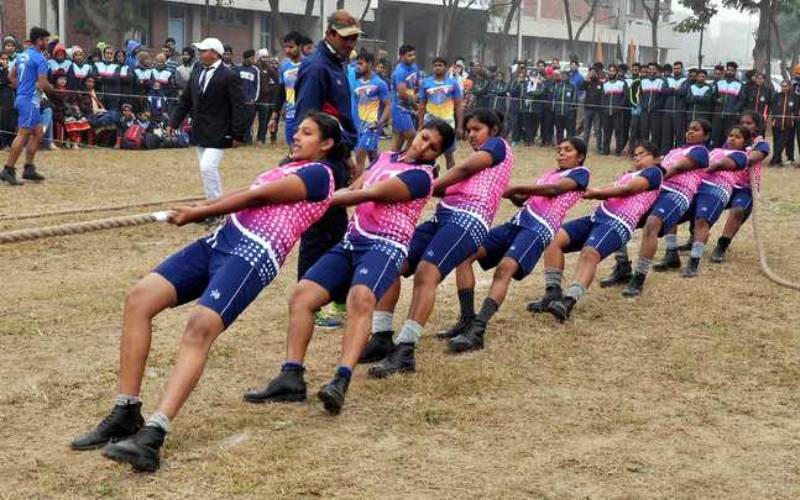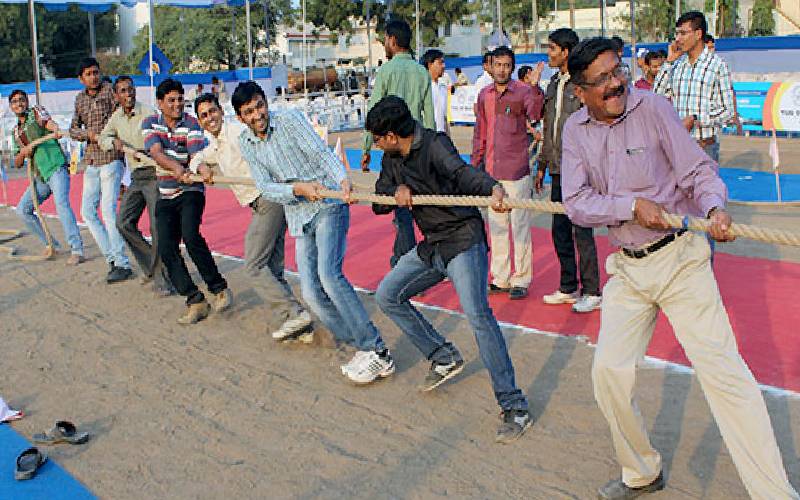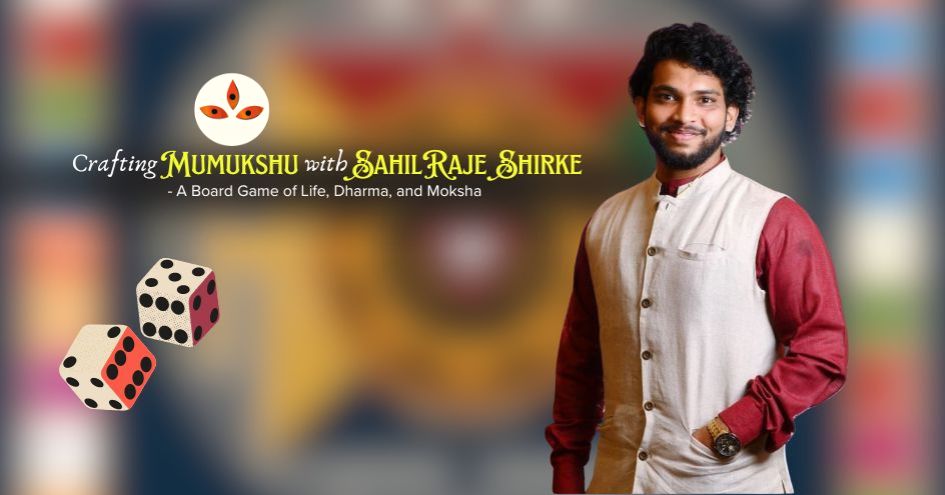
The Game Tug of War
The game of pulling a jute-rope by two team of players has been existing in the land from times immemorial. This game can be witnessed to be played by people, especially, during ceremonious days than on a casual summer day. The game tug of war is called Izhupari in Tamil. No wonder, one of the world's largest tug of war competitions happened in India, after China.
It is rare to glimpse a Pongal celebration without a tug of war competition. It has almost become a intrinsic part of the Tamil society. In North India, the game is played on auspicious days like Krishna Janmashtami, Deepavali, etc. While in Manipur, evidences show that a similar game called Pou Chingnaba (Tugging of bamboo) was played during olden days, which is now referred to as Thouri Chingnaba, where the bamboo is replaced with a rope.
History also echoes that the game was as well played in the world countries. Only handful of evidences could be traced regarding the origin of the game. Architectural corroborations found in the Sun Temple, Konark and Angkor Wat, Cambodia are the proofs available to show that the game was played world over.
Now that, it has become very much Indian, as everyone undeniably agrees the speculation that India is the land which gave birth to the game tug of war.
During the resplendent occasions in India, the game of rope is not played as a competition, rather as an enjoyment. On the day of Thai Pongal, the families get together and spend their eve joyfully playing tug of war, where “war" became enjoyment. Apart from providing a sense of pleasure, the game held more things to reveal.
Tug of war is normally played with a jute-rope. The rope is equally divided into two halves and the centre point is marked by tying a designed-kerchief. People divide themselves into two groups and begin to tug the rope. While they tug, the participants on both sides shout to keep themselves invigorated. At the end, the stronger team which pulls the other to their side is declared the winner. Sometimes when the participants at both sides are equally tough, the side which withholds the centre mark towards their side for a considerable length of time bags the reward.

There are also innumerable health benefits that one can gain from playing the game. It helps us to check our physical strength in terms of both upper and lower body and also helps gain the mental endurance. Hence, tug of war can be defined as a game which puts the muscles and the mind in work. It is a complete game.
Though the methods adopted by people to play the game differed in various places, this is the practice followed in many places. Further, the winners of the game are rewarded with a cash prize or a trophy.
Tug of war is also played in the military camps to keep their physical agility in check, for which the rules had been prescribed by a body called Tug of War Federation of India (TWFI).
World’s largest tug of war tournament was conducted at Bharuch in Gujarat wherein 5000 competitors took part. They set a new world record and this happened when Prime Minister Narendra Modi served as the CM of Gujarat.
Let’s take it in a lighter spirit, the values pointed by the game. First of all, the game substantiates the quote, “United we stand and divided we fall.” But it is best to keep ourselves reminded that by both, success or failure, we only gain experience. The main takeaway is to enjoy the process itself beyond the outcome.

T. R. Surya is the special correspondent of the company. He is an eloquent speaker and compendious writer of English. An avid learner of Sanskrit and Indian scriptures under the guidance of Swami Ganeshaswarupananda and Gita Chaitanya of Arshavidyalaya. His inclination and interests are towards studying Metaphysics and philosophies.
NEXT ARTICLE

Indian parents today are increasingly concerned about their children's limited exposure to the country's rich culture, heritage, and history. Recogniz...

2nd May, 2025In a world increasingly dominated by fleeting digital entertainment, SahilRaje Shirke, an entrepreneur with a deep-rooted passion for Ind...